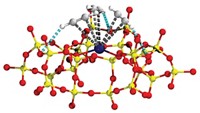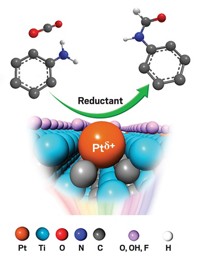Advertisement
Grab your lab coat. Let's get started
Welcome!
Welcome!
Create an account below to get 6 C&EN articles per month, receive newsletters and more - all free.
It seems this is your first time logging in online. Please enter the following information to continue.
As an ACS member you automatically get access to this site. All we need is few more details to create your reading experience.
Not you? Sign in with a different account.
Not you? Sign in with a different account.
ERROR 1
ERROR 1
ERROR 2
ERROR 2
ERROR 2
ERROR 2
ERROR 2
Password and Confirm password must match.
If you have an ACS member number, please enter it here so we can link this account to your membership. (optional)
ERROR 2
ACS values your privacy. By submitting your information, you are gaining access to C&EN and subscribing to our weekly newsletter. We use the information you provide to make your reading experience better, and we will never sell your data to third party members.
Synthesis
Catalyst Combo For Cyclohexanone
by Elizabeth K. Wilson
November 30, 2009
| A version of this story appeared in
Volume 87, Issue 48
Researchers at the Chinese Academy of Sciences’ Institute of Chemistry, in Beijing, have found that combining two common catalysts can produce the industrially important chemical intermediate cyclohexanone at higher yields and lower temperatures than do current methods (Science 2009, 326, 1250). Tao Jiang and colleagues used a palladium nanoparticle catalyst on a solid support and the Lewis acid catalyst AlCl3 to hydrogenate phenol to cyclohexanone. The reaction, when carried out at 50 °C and 1 megapascal of H2, proceeds with essentially 100% yield and selectivity. Cyclohexanone is the starting material used in the synthesis of materials such as nylon. Hydrogenating phenol via a palladium catalyst is a key industrial route to cyclohexanone, but it typically requires high temperatures (150–300 °C) and suffers from low yields. Scientists have searched for catalysts to improve the reaction, but they have had trouble preventing continued hydrogenation of cyclohexanone into cyclohexanol. Interactions between the Lewis acid and cyclohexanone might inhibit the excess hydrogenation into cyclohexanol.




Join the conversation
Contact the reporter
Submit a Letter to the Editor for publication
Engage with us on Twitter